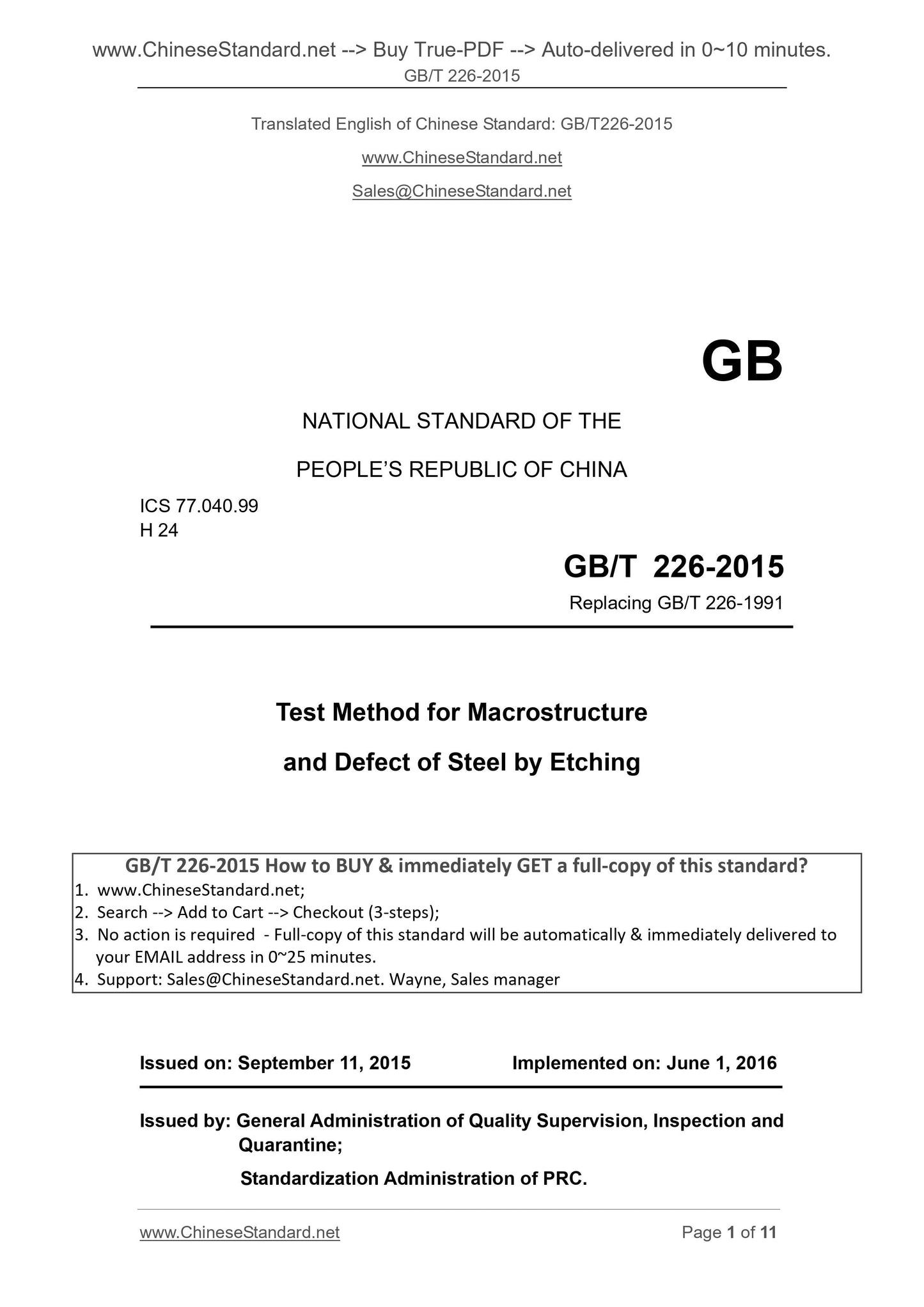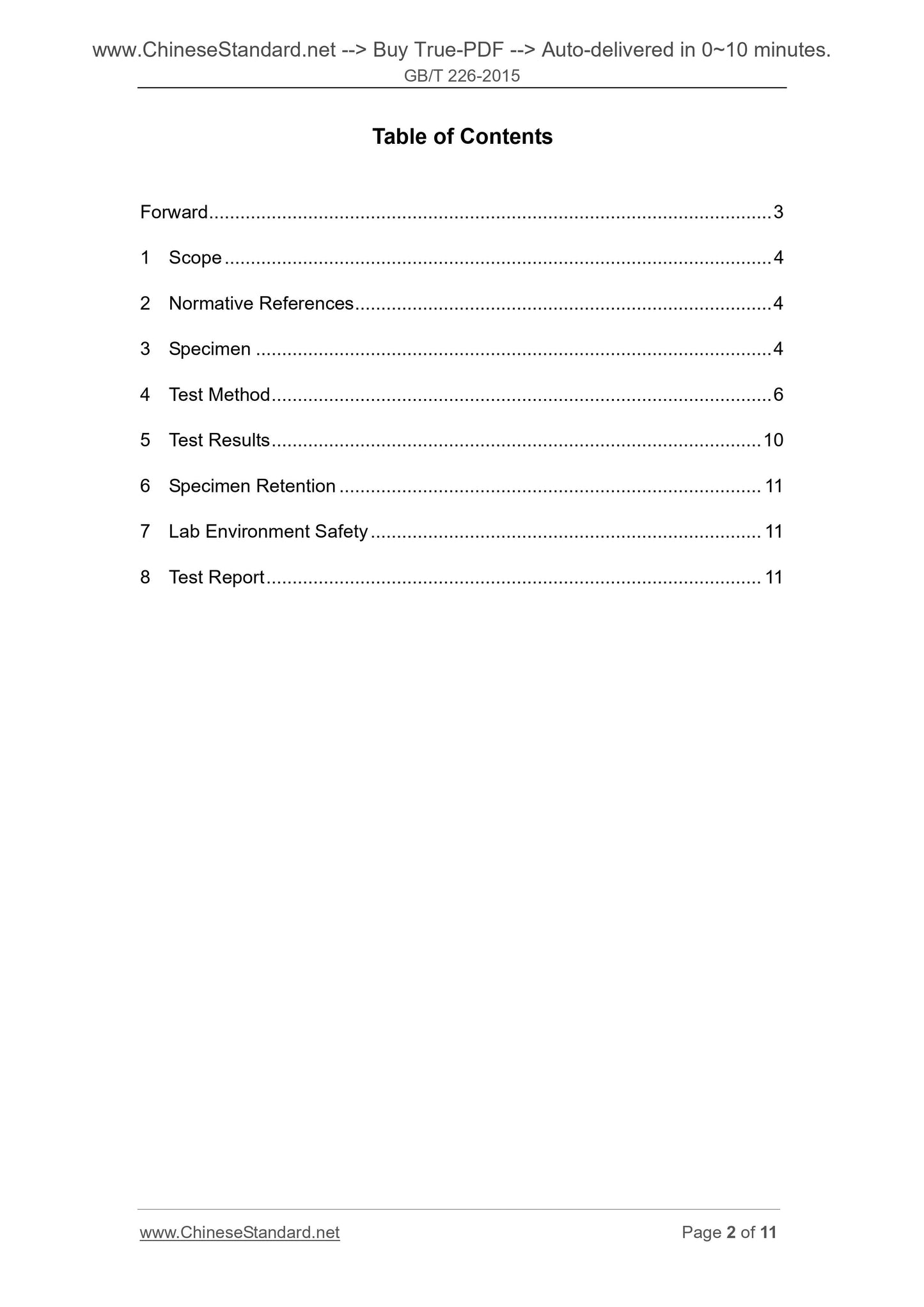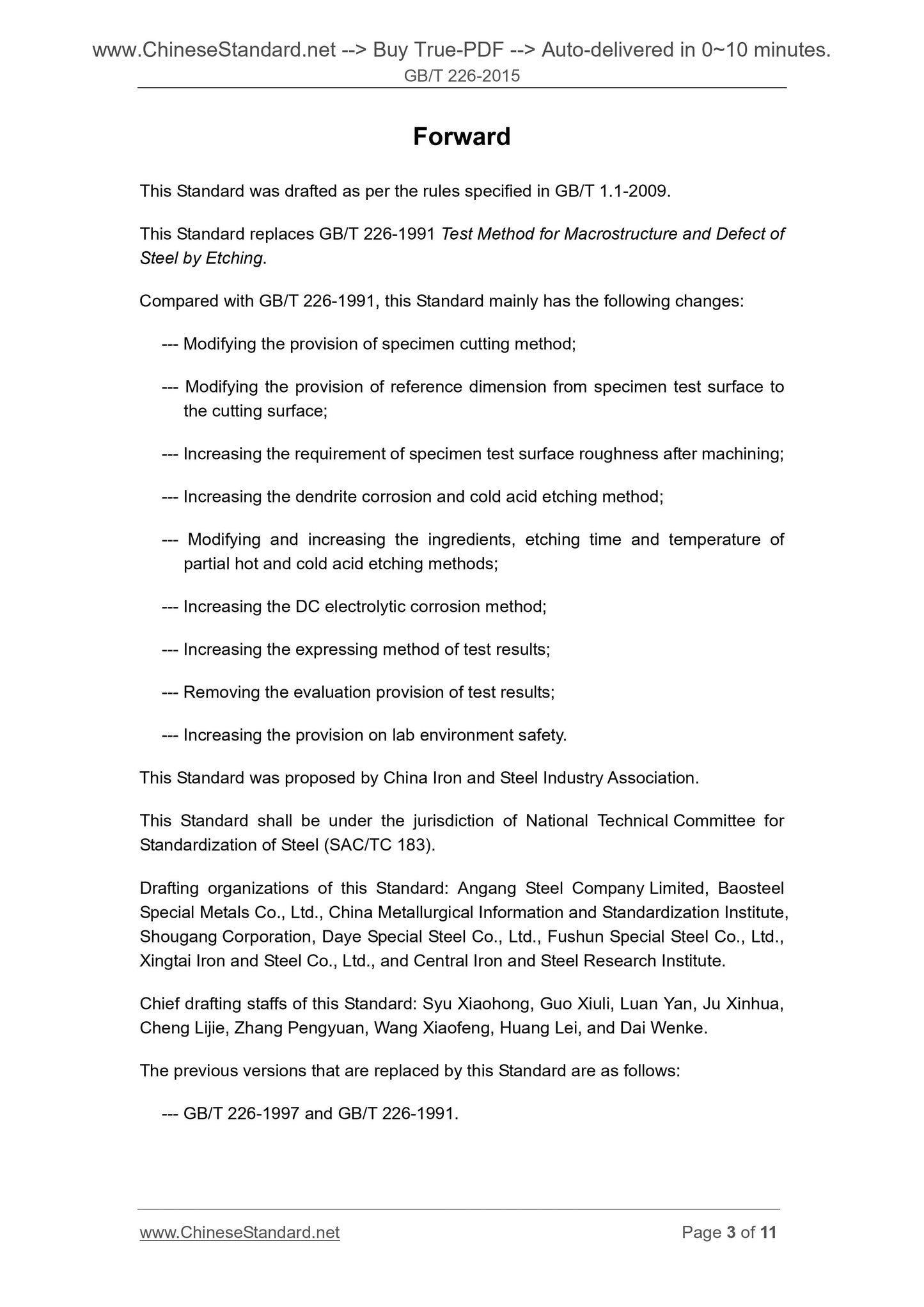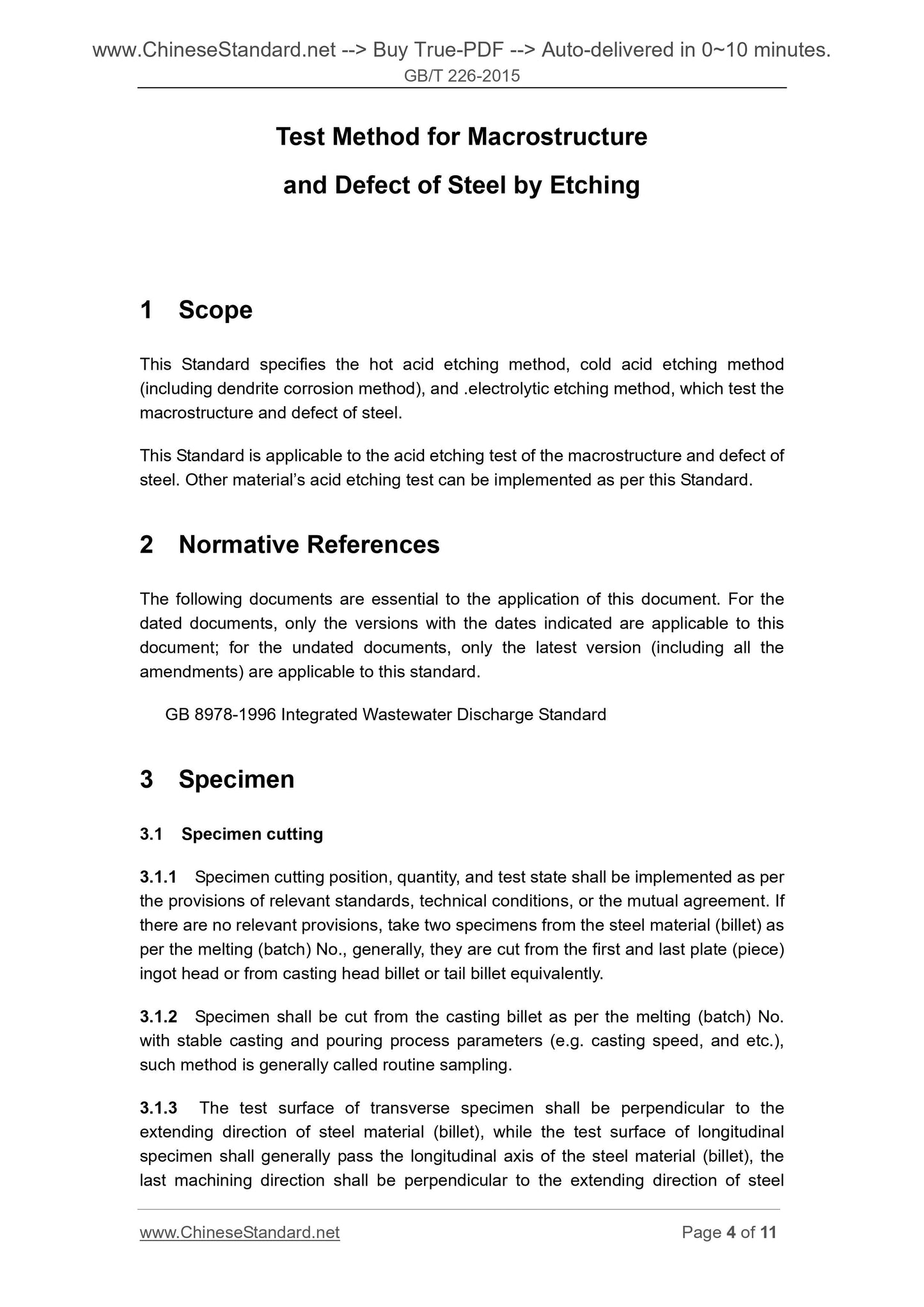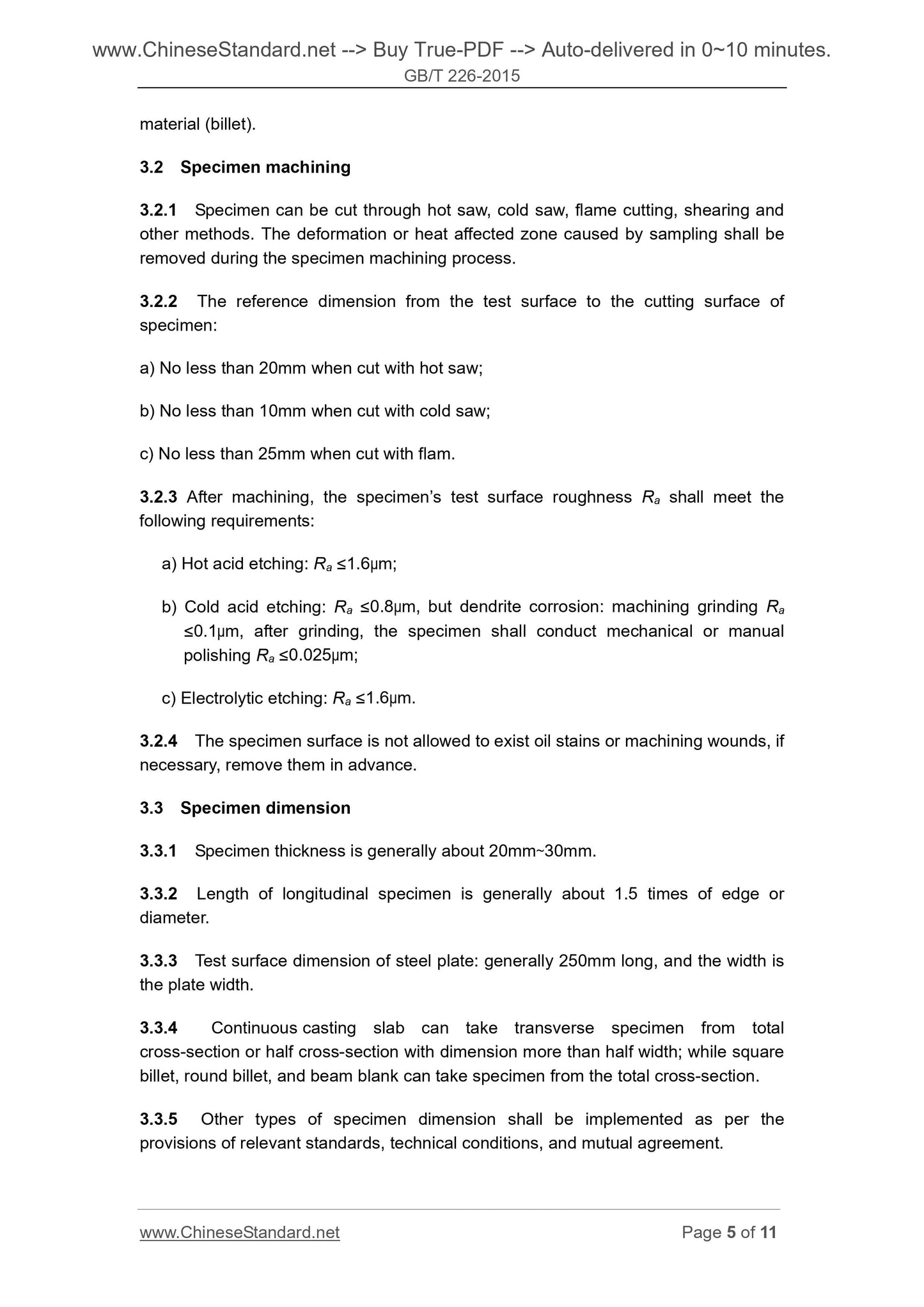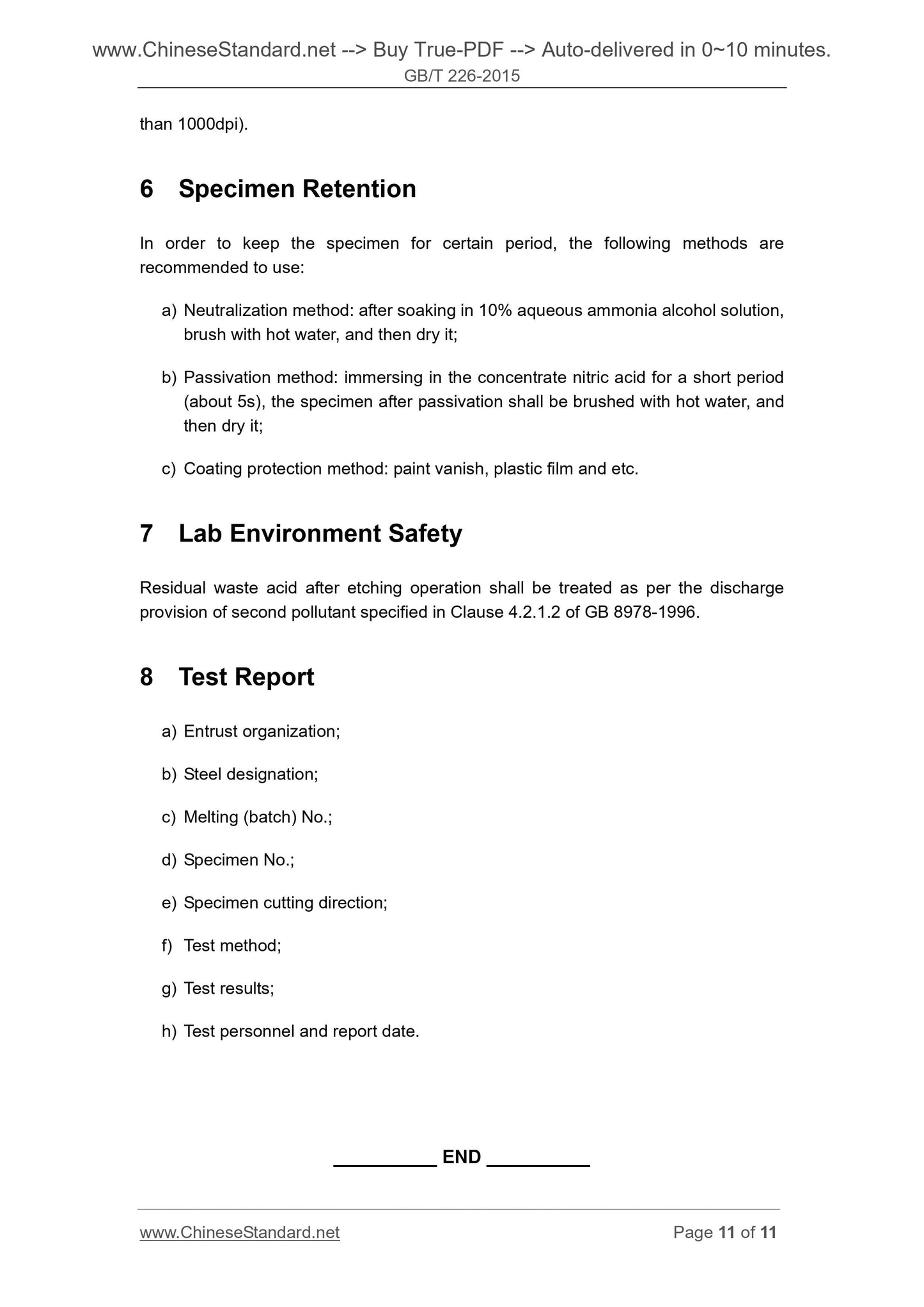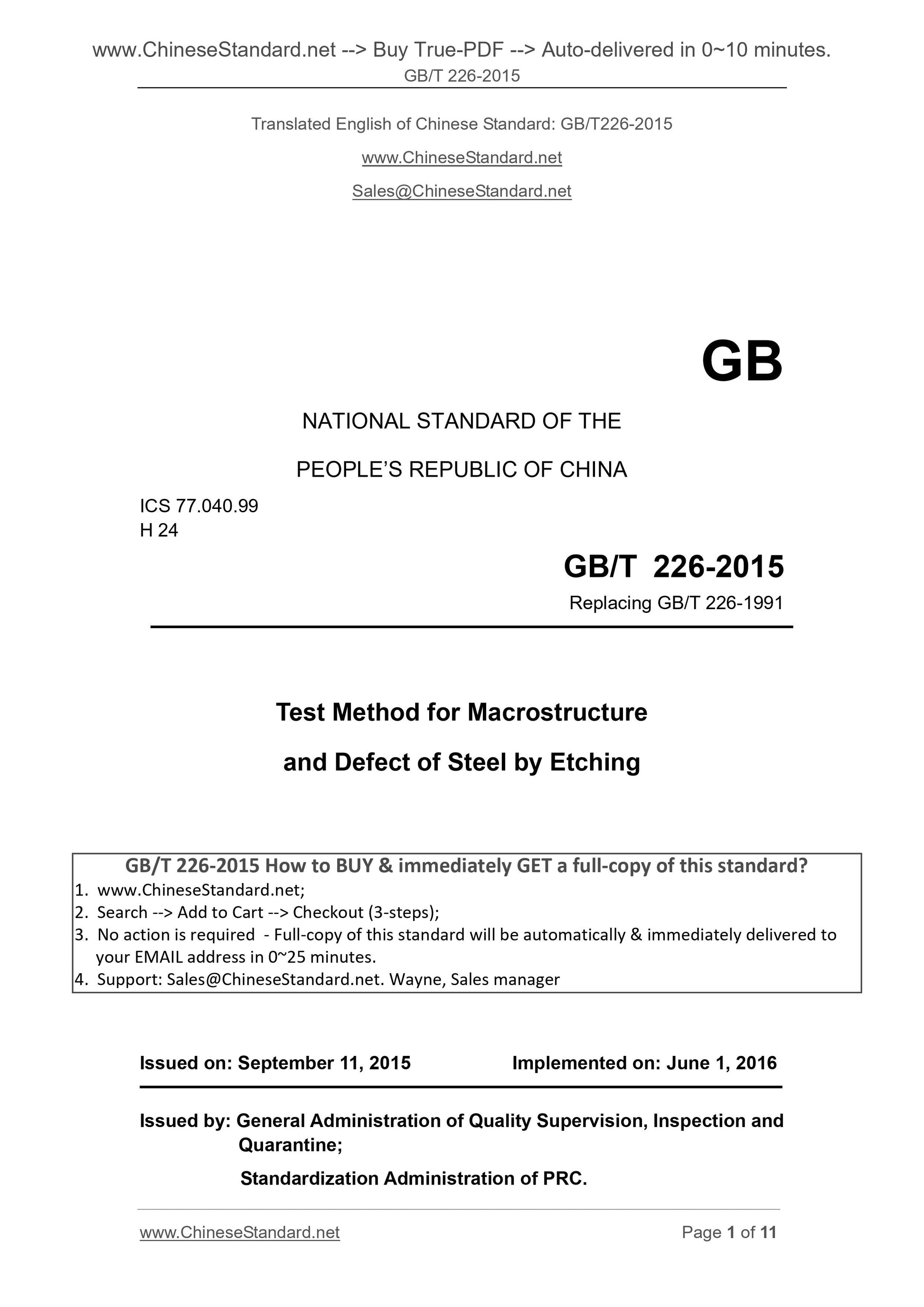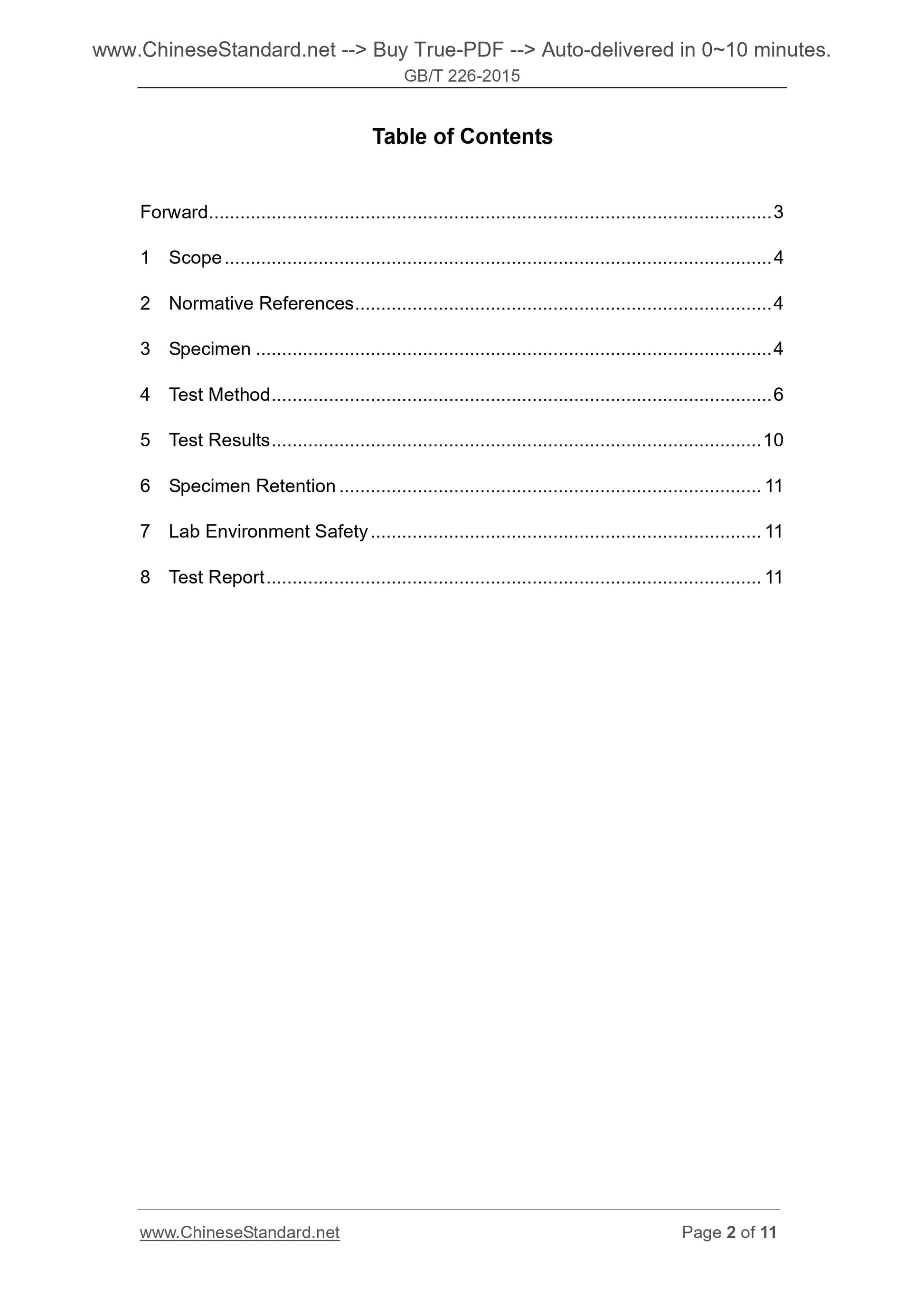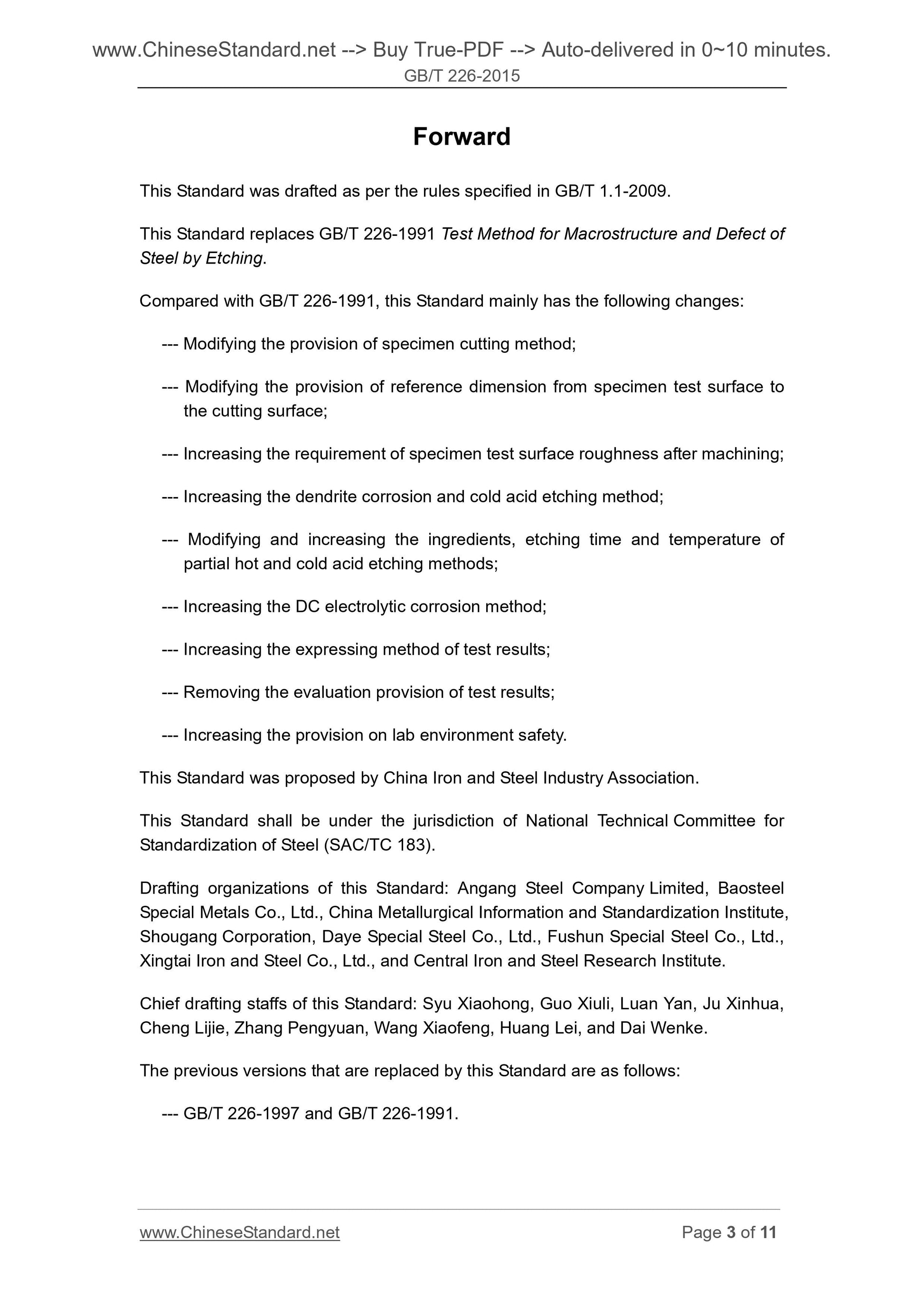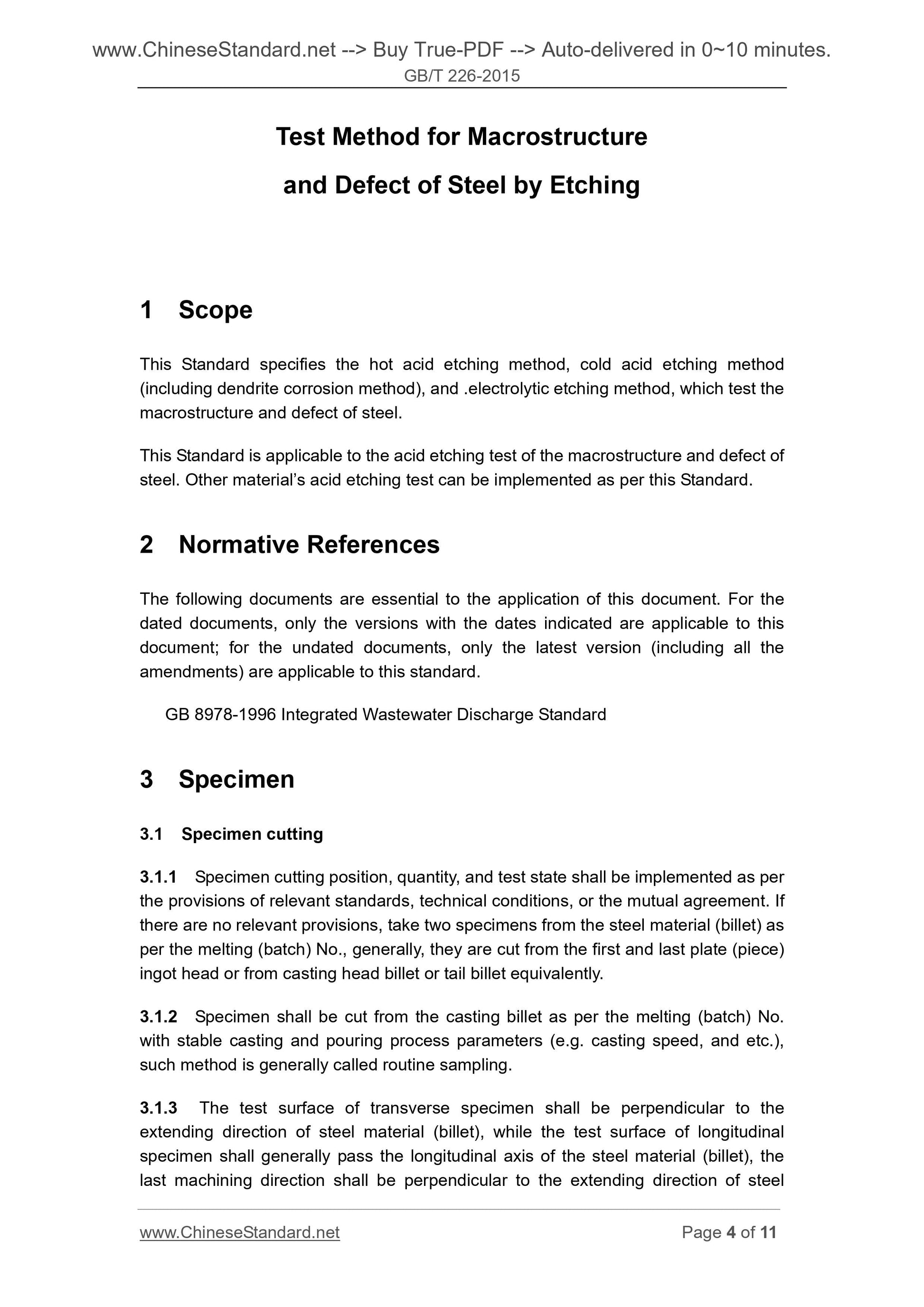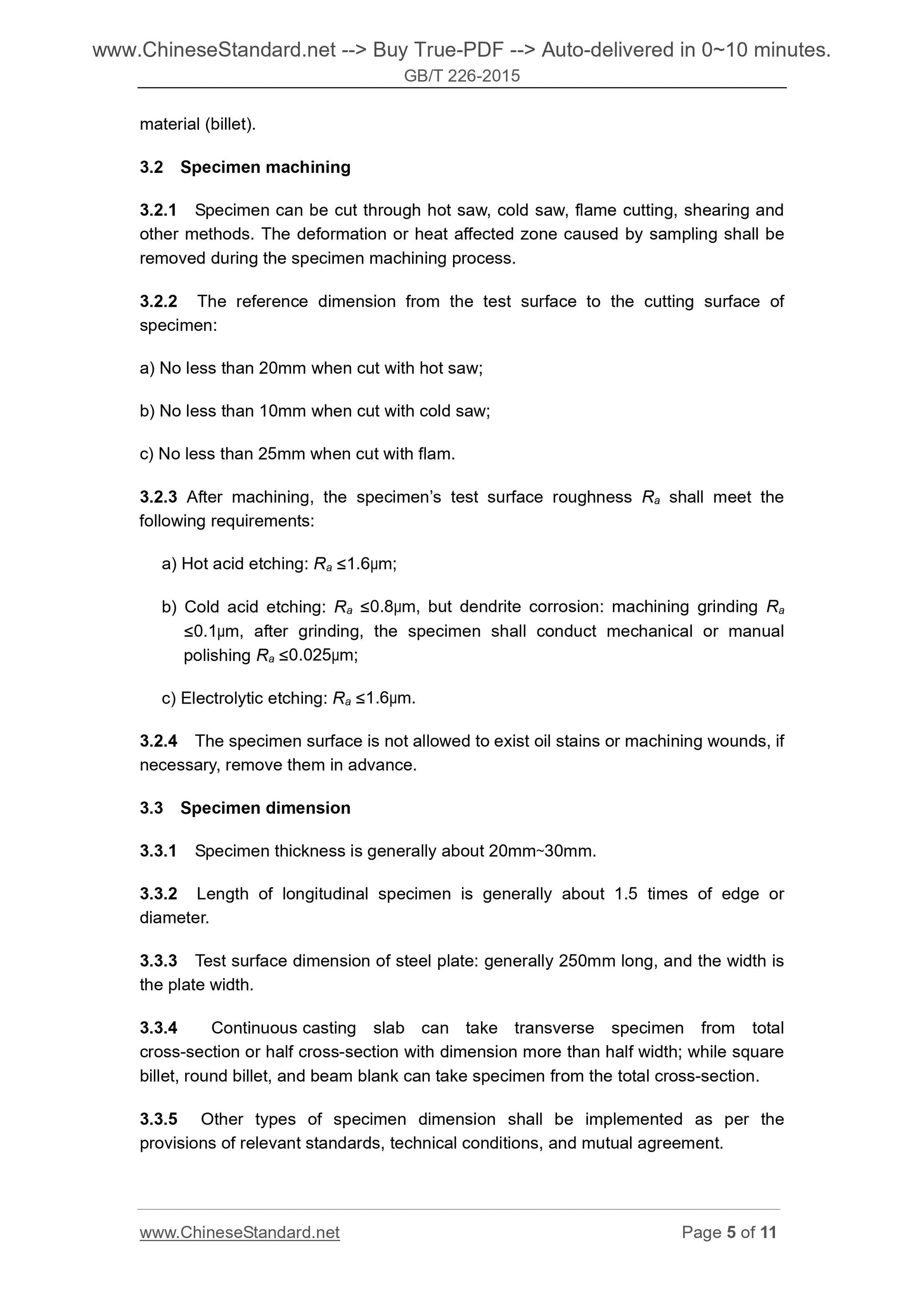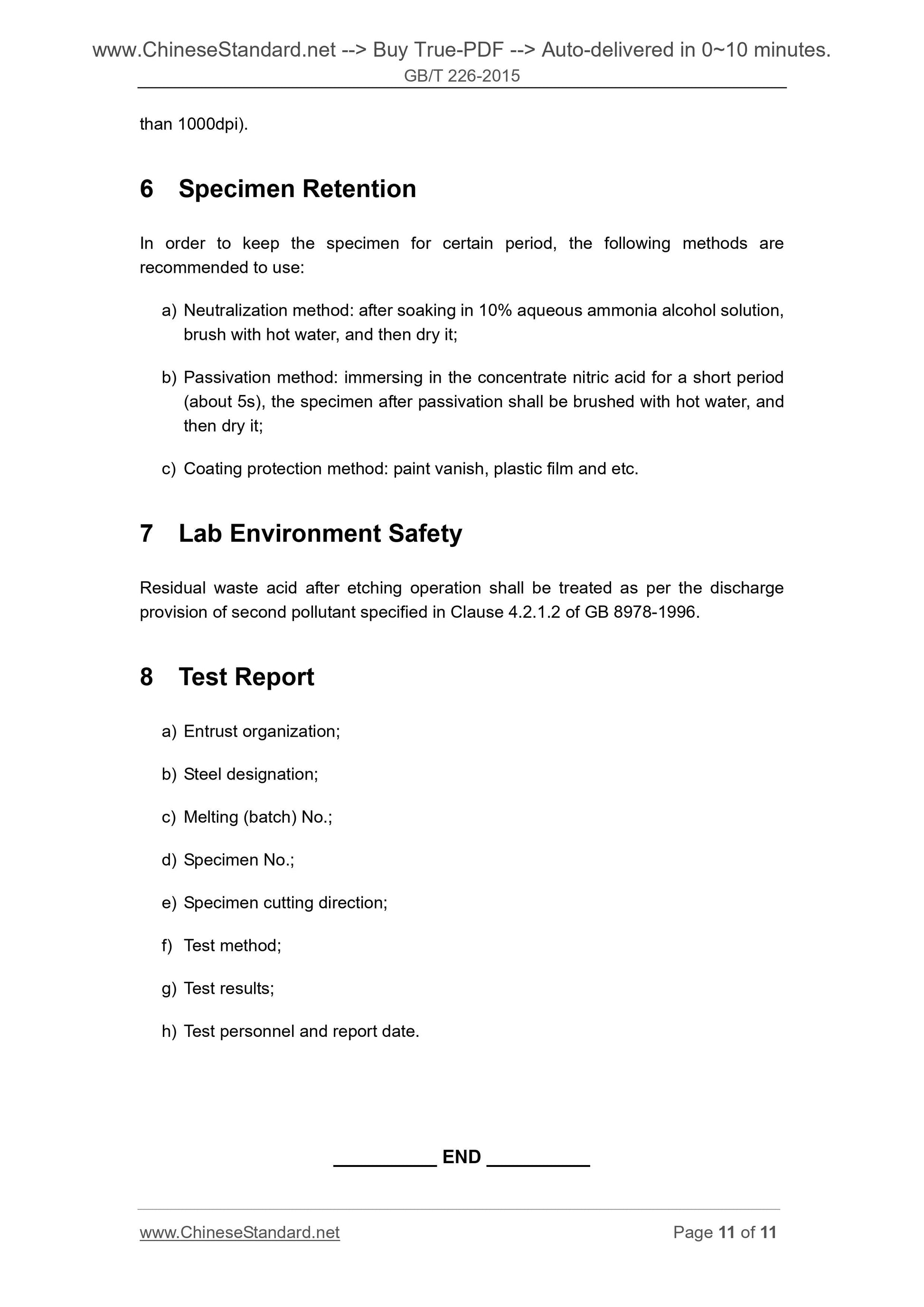1
/
of
6
www.ChineseStandard.us -- Field Test Asia Pte. Ltd.
GB/T 226-2015 English PDF (GB/T226-2015)
GB/T 226-2015 English PDF (GB/T226-2015)
Regular price
$85.00
Regular price
Sale price
$85.00
Unit price
/
per
Shipping calculated at checkout.
Couldn't load pickup availability
GB/T 226-2015: Test Method for Macrostructure and Defect of Steel by Etching
Delivery: 9 seconds. Download (and Email) true-PDF + Invoice.Get Quotation: Click GB/T 226-2015 (Self-service in 1-minute)
Newer / historical versions: GB/T 226-2015
Preview True-PDF
Scope
This Standard specifies the hot acid etching method, cold acid etching method(including dendrite corrosion method), and .electrolytic etching method, which test the
macrostructure and defect of steel.
This Standard is applicable to the acid etching test of the macrostructure and defect of
steel. Other material’s acid etching test can be implemented as per this Standard.
Basic Data
| Standard ID | GB/T 226-2015 (GB/T226-2015) |
| Description (Translated English) | Test Method for Macrostructure and Defect of Steel by Etching |
| Sector / Industry | National Standard (Recommended) |
| Classification of Chinese Standard | H24 |
| Classification of International Standard | 77.040.99 |
| Word Count Estimation | 7,779 |
| Date of Issue | 2015-09-11 |
| Date of Implementation | 2016-06-01 |
| Older Standard (superseded by this standard) | GB/T 226-1991 |
| Quoted Standard | GB 8978-1996 |
| Regulation (derived from) | National Standard Announcement 2015 No.25 |
| Issuing agency(ies) | General Administration of Quality Supervision, Inspection and Quarantine of the People's Republic of China, Standardization Administration of the People's Republic of China |
| Summary | This Standard specifies the hot acid etching macrostructure and defect inspection of steel, cold acid etching (including dendritic etching) and electrolytic etching. Etch test This Standard applies to steel macrostructure and defect. Etch test other materials may refer to this standard. |
Share
